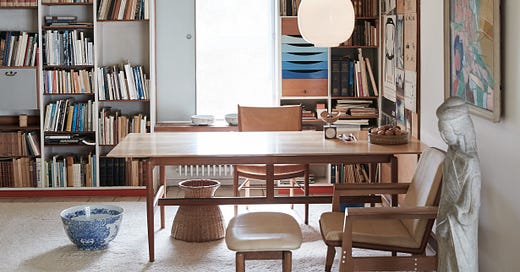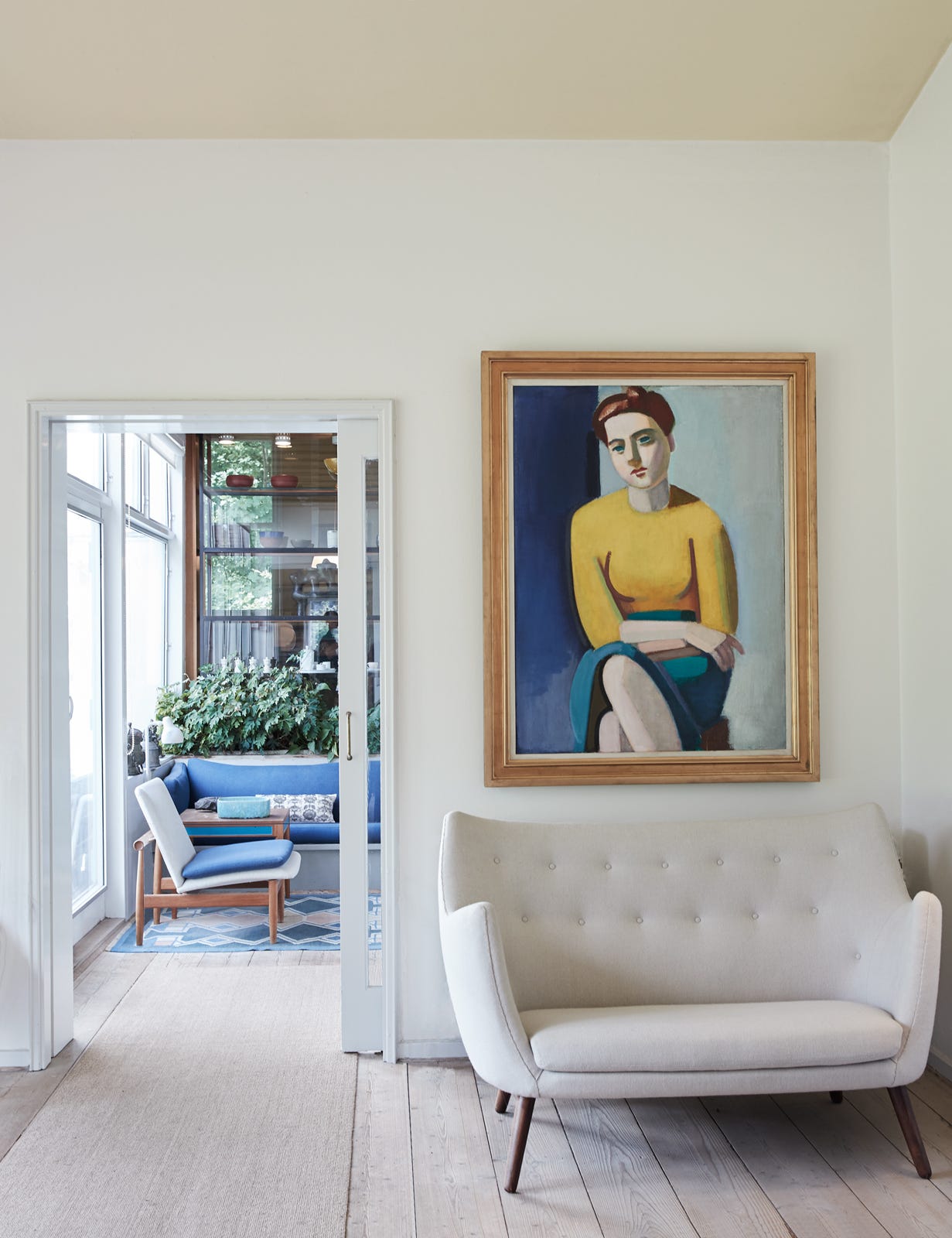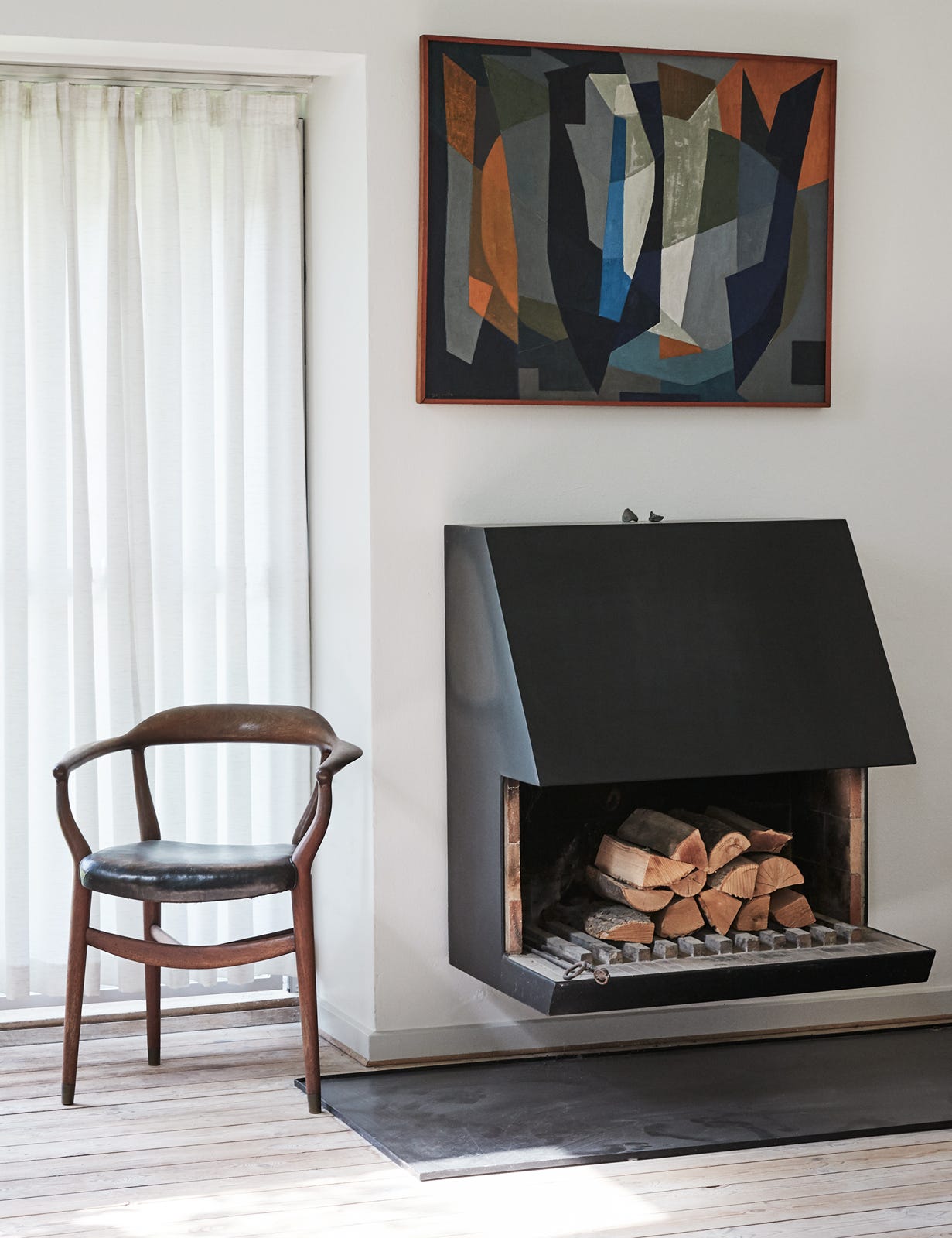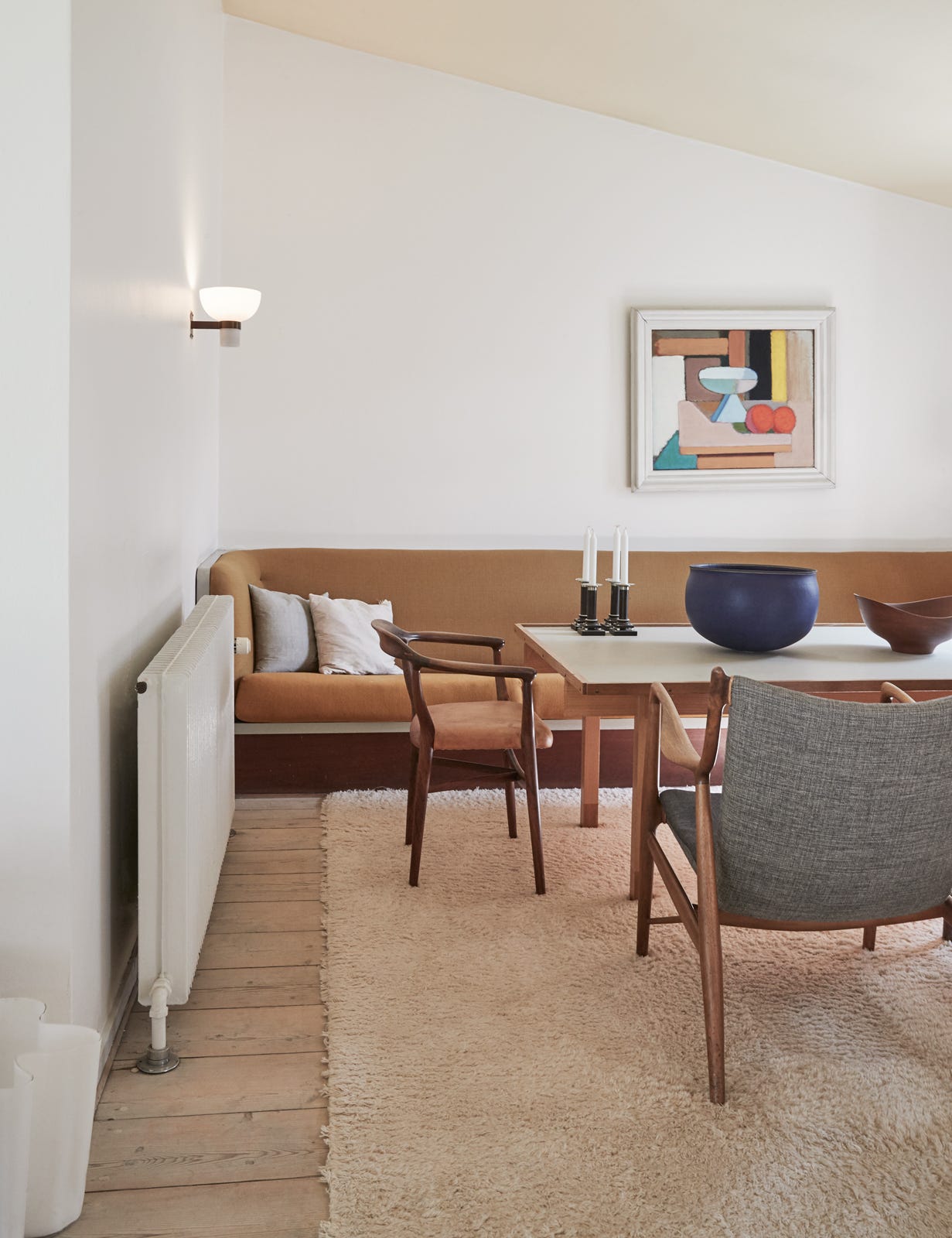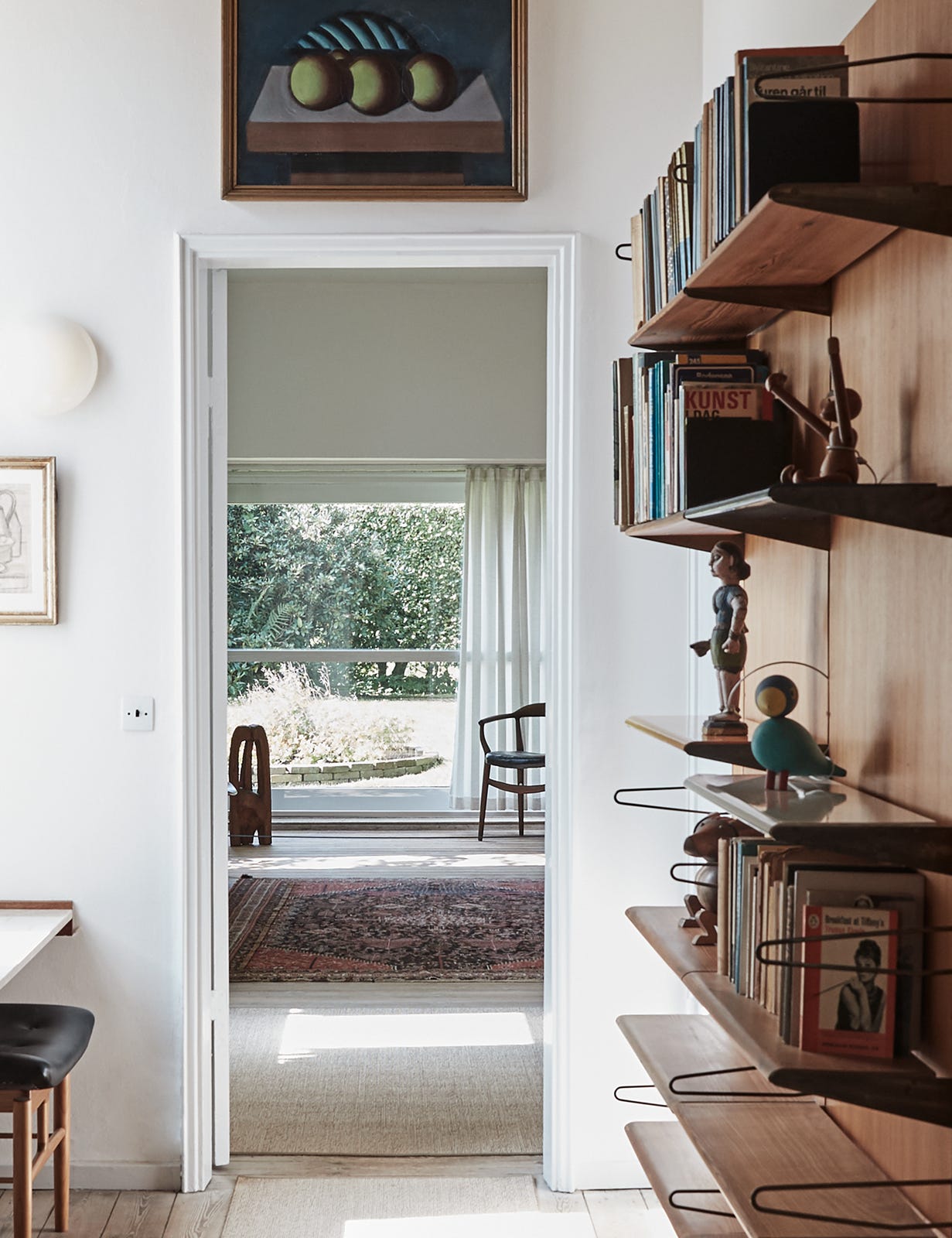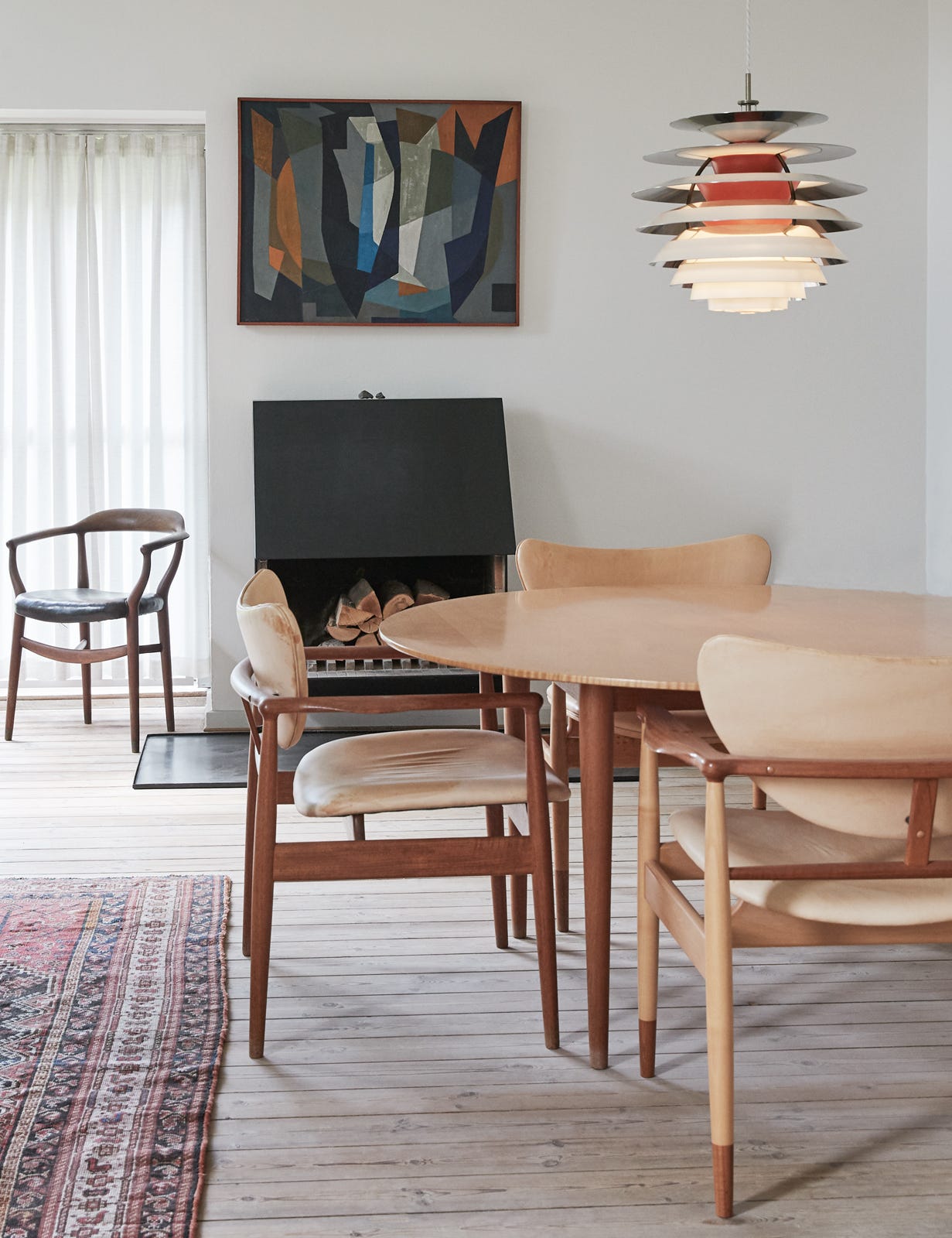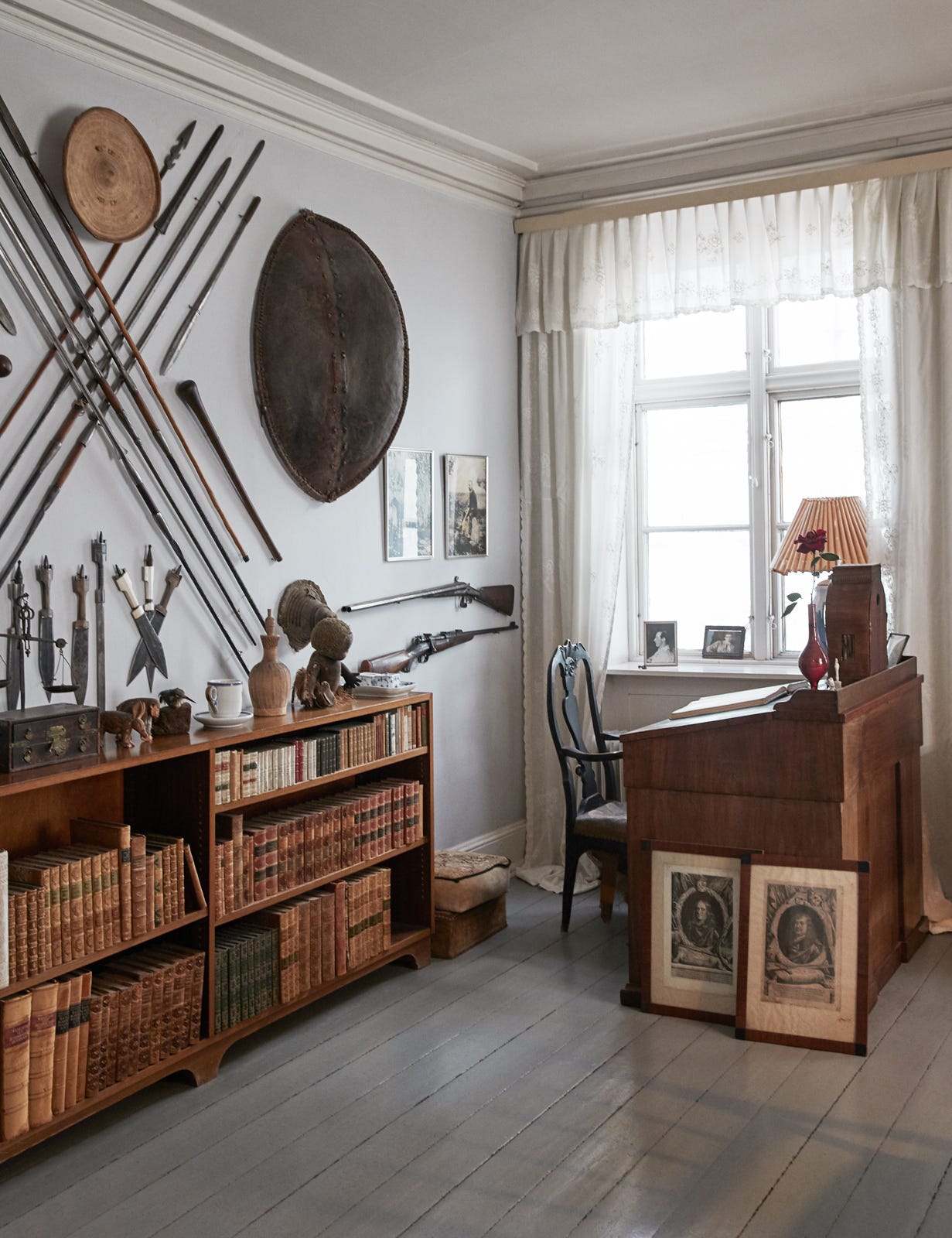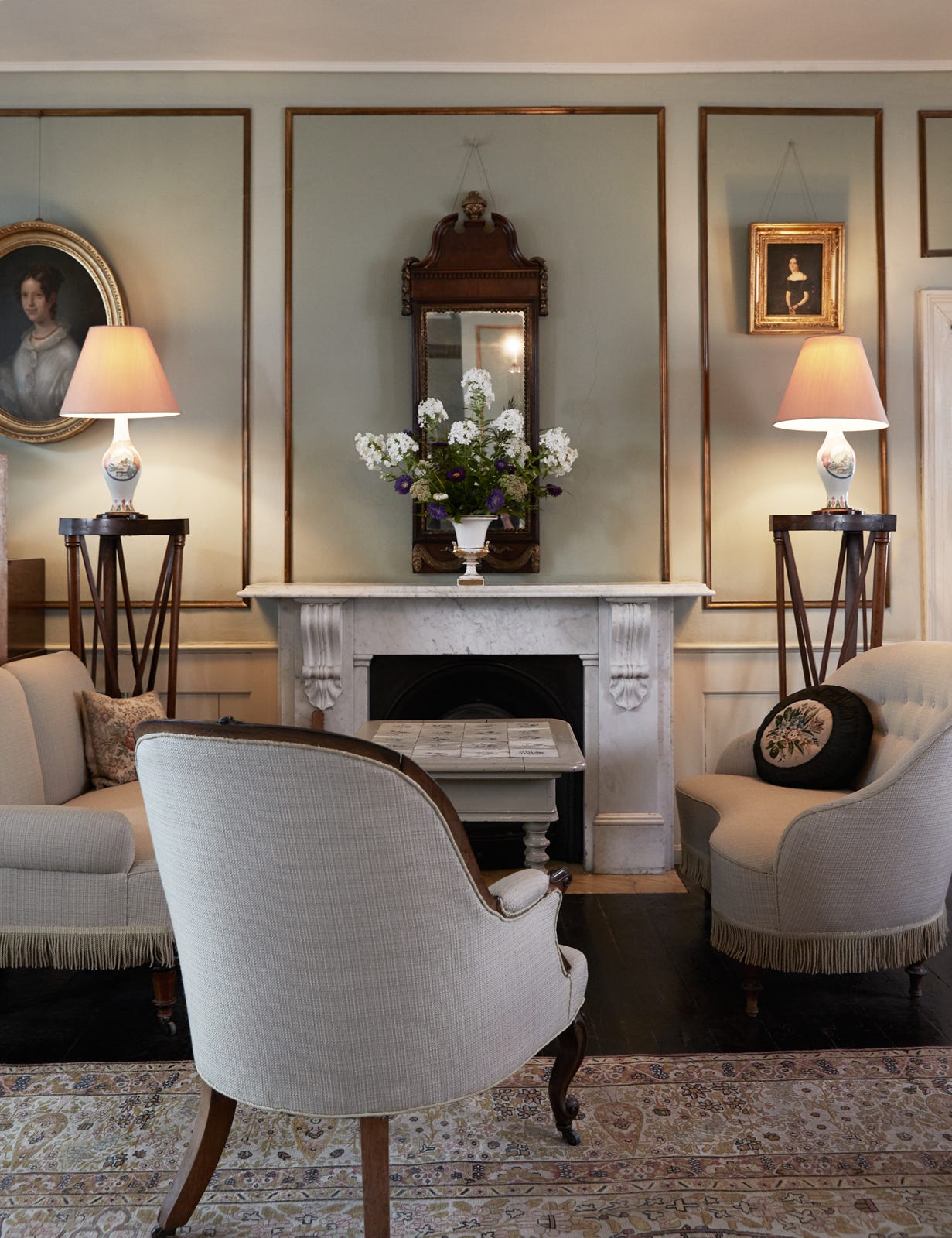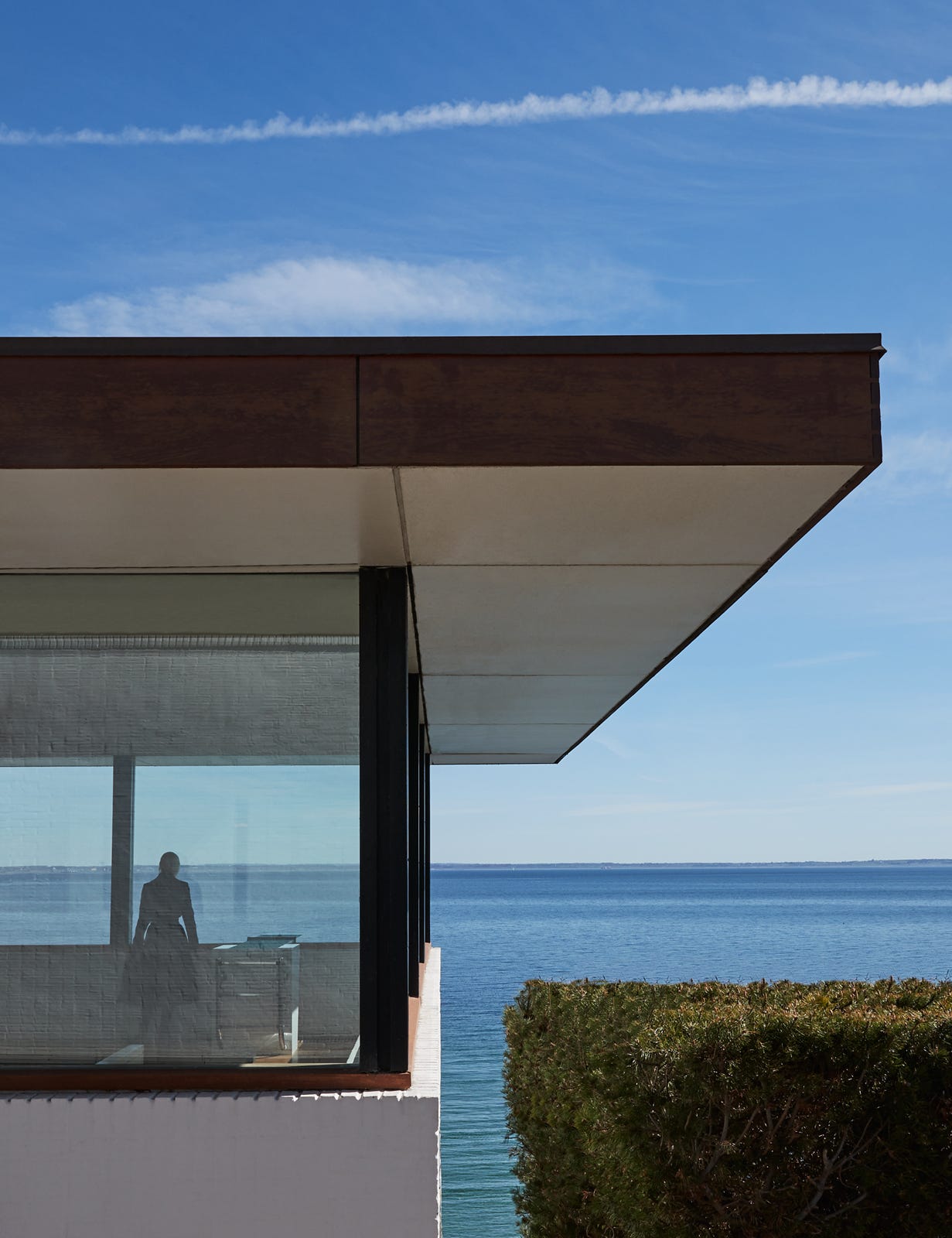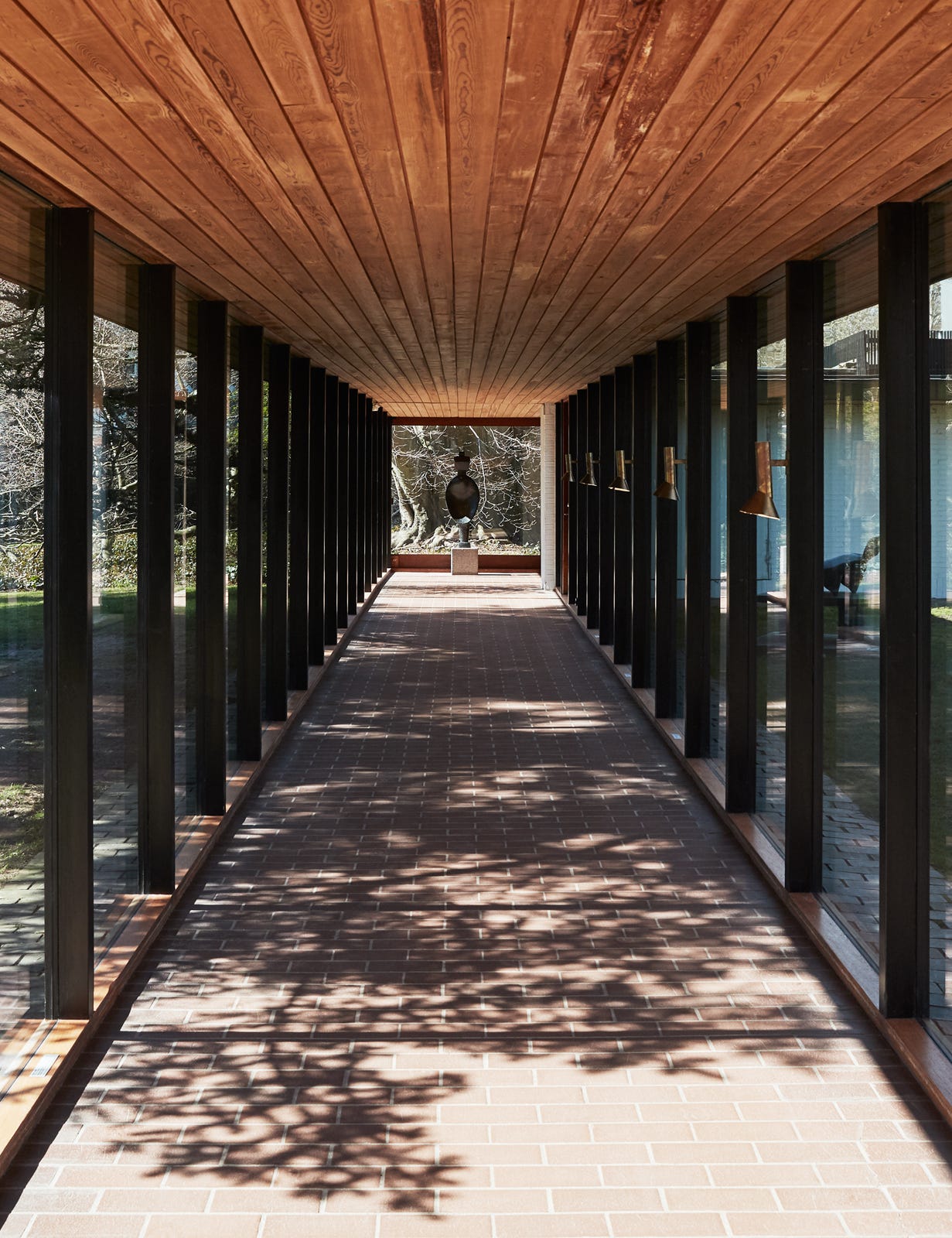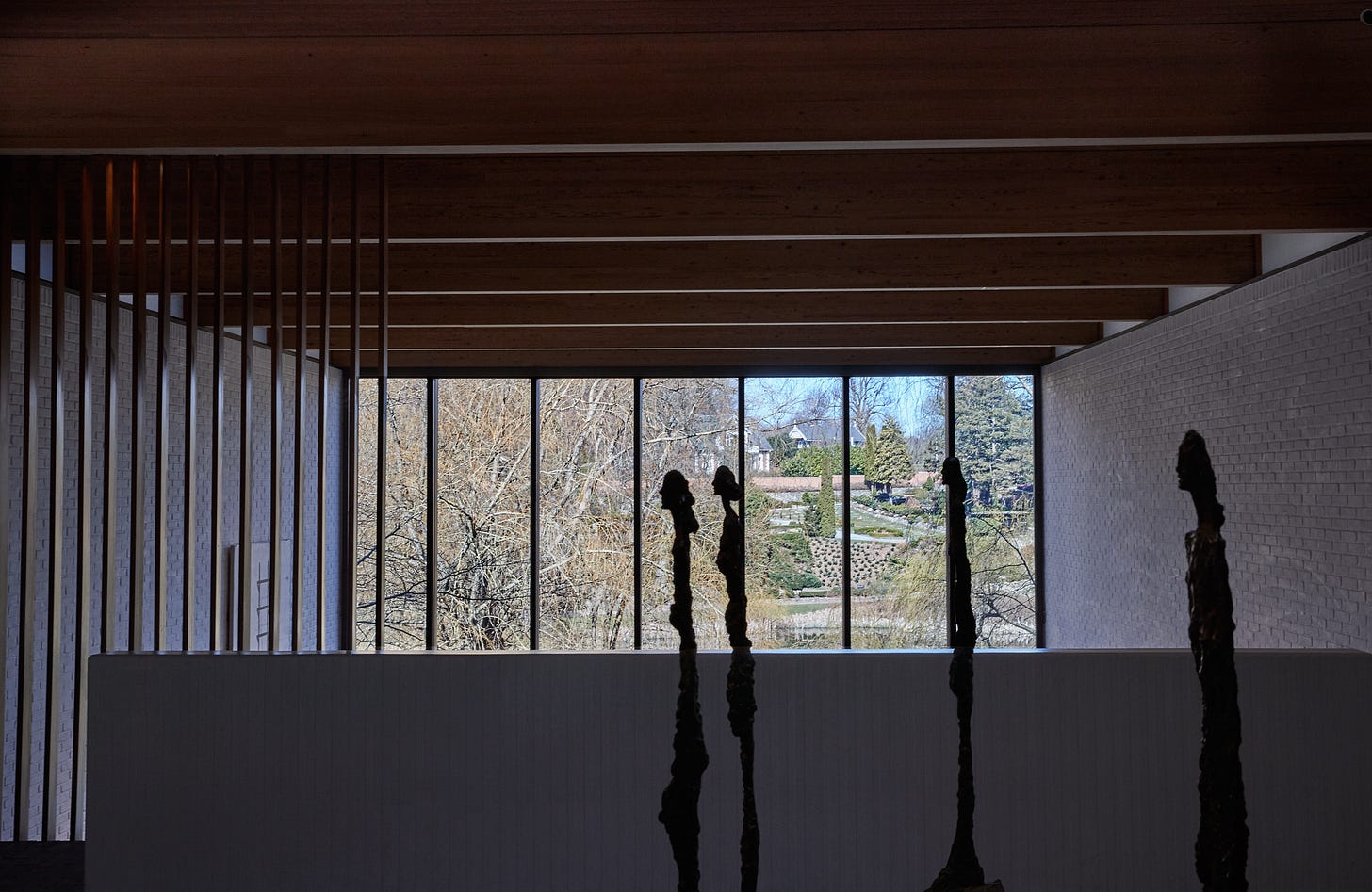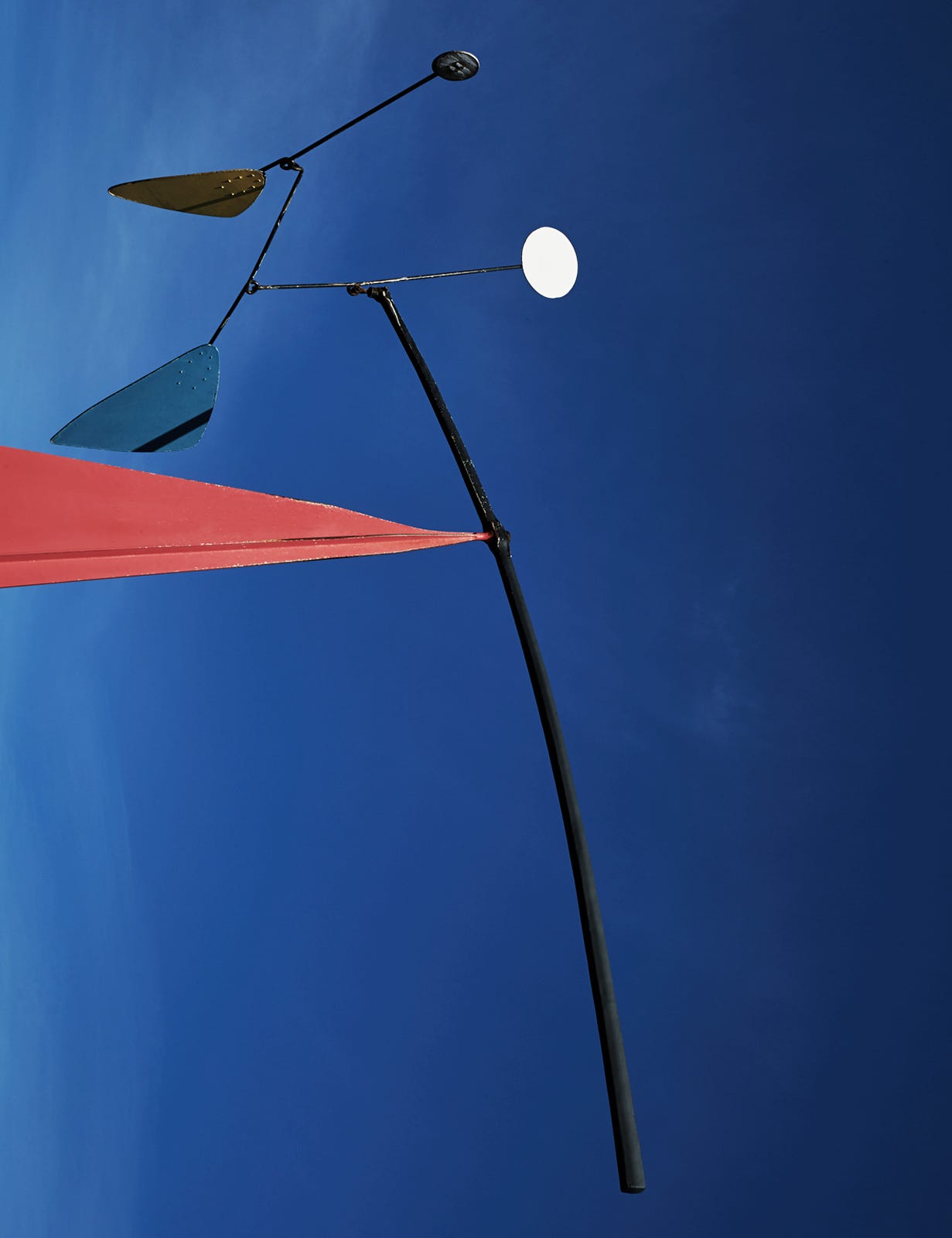Many years ago, I read in an interior design magazine about the former home of Finn Juhl turned into a museum, just north of Copenhagen, in the small suburb of Ordrup. Even though I grew up not far from there, I had never heard of Ordrup, and I had no idea that Finn Juhl, one of the most prominent of the Danish mid-century modern designers, had built a house for himself and his first wife (Inge Marie Skaarup) there. When I saw the photos of the villa, I was mesmerized, and ever since I have dreamt of visiting.
What was it about the house that I found so appealing? It’s not a big house, and rather unassuming looking, at least from the outside. Many of the furniture are Finn Juhl originals, well-known for those who frequent places like the furniture department of Bon Marché in Paris or Copenhagen’s Illum Bolighus. It consists of two one-storey buildings that together form an L. The smaller part holds a living room and study, and in the other, slightly larger, there is a kitchen, bathroom, two bedrooms and a dining room. In the middle of the L, there is the entrance as well as sliding doors that open out into the garden, designed by landscape architect Troels Erstad.
Recently, I was finally able to see the house in real life. For almost two decades, I had been thinking about this visit. One of the things that I learned from studying the house is how closely related Scandinavian modern design and traditional Japanese craftsmanship are with one another. The house was filled with Japanese items, and the sliding doors were clearly inspired by Japanese architecture. What has been added by the Scandinavians is warmth. The Danish interpretation is decidedly humanist in its approach to everyday objects.
Juhl lived in the house for 47 years. His first wife only stayed for a year, but his new partner, Hanne Wilhelm Hansen, remained in the house until her death in 2003. It’s easy to understand why – I don’t think I’ve ever been in a house with this much character, while also remaining light and carefree. The house has been preserved as it was during Juhl’s lifetime, complete with his collection of books and artworks by Danish artists (including Vilhelm Lundstrøm, Asger Jorn, Erik Thommesen and Sonja Ferlov Mancoba).
Though trained as an architect, today Juhl is mainly remembered for his iconic furniture, such as the Chieftain Chair, the Poet Sofa, and the Silver Table.
For the house, he received the prestigious C.F. Hansen-medal in 1944.
Karen Blixen’s Rungstedlund
Only about fifteen minutes north of the Finn Juhl House, you will find another former private home. In 1879, Karen Blixen’s father bought the estate Rungstedlund (which previously was both a farm and an inn that had welcomed many famous Danish poets, including Ludwig Holberg and Johannes Ewald), and this is where she grew up. In 1931, upon her return from Kenya, she came to live here with her mother, and stayed here until her own death in 1962. Rungstedlund is where she became a writer.
“Den grannie stue”, or “the green room”, is where she during winters would sit and write (as the rest of the house was too poorly insulated to live in). In summers, she preferred writing in “Ewald’s stue”, her father’s former study. Another important room is “Kaminstuen”, where she would record her programmes for Danish Radio. Personally, I am fascinated by Rungstedlund’s kitchen, designed in 1960 by architect Steen Eiler Rasmussen – this is where Blixen planned her many dinner parties and also where she prepared her famous flower arrangements.
Her rooms are left as they were, including the flower arrangements that you will see in almost every room. Blixen was an avid gardener and was the first in the world to also include vegetables and weed in her bouquets. She arranged the garden in a way that made it possible for her to have flowers inside all year round.
Her time in Kenya has left many traces in the interiors, creating an unusual mix of African and European styles.
Rungstedlund’s park is also a bird sanctuary and home to more than 40 different bird species, supervised by the Danish Ornithological Society.
Don’t miss Blixen’s grave, under a large beech tree in the garden.
Louisiana Art Museum
Only a few minutes north of Rungstedlund, you will find one of the world’s most famous art museums, Louisiana. The name of Louisiana is based in a series of relationships – the property was once the country home of nobleman Alexander Brun, married three times, each time to a woman named Louise. The founder of the art museum, Knut W. Jensen, overtook the name when he purchased the building.
The Louisiana Collection currently comprises 4,000 artworks. Instead of aiming for a complete chronology of art history, it is organised around certain groups of work and specific artistic periods. Many associate it particularly with its collection of Giacometti-sculptures, but it also includes important works by Louise Bourgeois, Yves Klein, Andy Warhol and David Hockney, among many others.
Louisiana is not only known for its art but also for its architecture. The architects, Jørgen Bo and Wilhelm Wohlert, were asked by Jensen to design the museum building around the old villa, linking the new additions to the already existing spaces, while also respecting the natural surroundings.
Louisiana opened in 1958, and since then, the building has extended into the surrounding park at seven different times, each time overseen by architect Claus Wolhert.
The first part of the building is known as the North Wing and includes the famous Giacometti-room with a view of the lake. There is a particular resonance in this space – a sense of calmness and peace, which has made it a favourite among many visitors.
Inspiration for the layout was found in a combination of American, Japanese, and European architecture. When Wohlert studied at the University of California at Berkeley, he became acquainted with the particular style of Bay Area architecture, characterised by the wooden houses in San Francisco Bay, something he would come to incorporate at Louisiana. There are also distinct references to the traditional simplicity of the Japanese building style, viewed through the mid-century modern-aesthetics that was emerging in Denmark at the time.
Located in the small town of Humlebæck, Louisiana is so vast, and the exhibitions are often so ambitious, that one can easily spend a whole day here, without even seeing everything on display. In the summer many like to go for a swim in the sea just below the museum park. On the other side of the Sound, you can catch a glimpse of the most southern part of Sweden, as well as the island Ven, once home to astronomer Tycho Brahe.
For many who visit the museum, what draws them to the space is in equal parts the art and its particular atmosphere, where the blurring of outside and inside through glass walls and sense of lightness is an important component. The walls are long and whitewashed, the basic structures exposed. The ceilings are laminated wood, while the floors are made from deep-red tiles, which has inspired several buildings, designed in the spirit and style of Louisiana.
The park includes 45 sculptures, all part of the museum’s permanent art collection. These sculptures are also one of the reasons that the museum is interesting to visit regardless of time of year; the sculptures will appear very differently depending on season.


